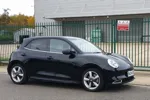One of the most common questions we are being asked is how we see the market moving between now and Christmas – and beyond.
It will come as no surprise to anyone that we believe the market will see more of the same. City cars and other small vehicles are clearly the only market sector enjoying anything like sustained demand.
CAP Black Book values for cars at three years/60,000 miles tell the story of the decline in the market.
Between January and October 2007 the average pricing movement represented a rise of 1.1%.
This year values have fallen by 17.5% over the same period, with some sectors faring significantly worse.
A more meaningful measure is mean annual depreciation – the cumulative value lost by individual vehicles over time.
This is the issue which taxes dealers’ minds, exposed to depreciating forecourt assets.
It reveals that even superminis have not sidestepped the pressure on prices, falling by 18.9% this year, compared with 12.8% in 2007.
But that looks a fairly robust performance compared with upper-medium cars, depreciating by 33.4% so far this year against 14.2% in 2007.
This is based on cars ageing from two to three years, when depreciation is actually levelling off.
We see no change in this dynamic before the middle of next year. With the economy delivering fresh shocks weekly there are no reasons to expect the March plate to rescue the market.
However, some factors will limit the rate of decline. Because discretionary purchases are falling, as consumers choose to buy when they need to – rather than when they would like – there is some natural limiting of volume as trade-in vehicle supply reduces.
We expect growth in the cheapest end of the market. With the drying-up of sub-prime finance and young people in particular struggling to find credit, there will be an increasing drift toward the sub-£1,000 car that can be paid for in cash.














Login to comment
Comments
No comments have been made yet.